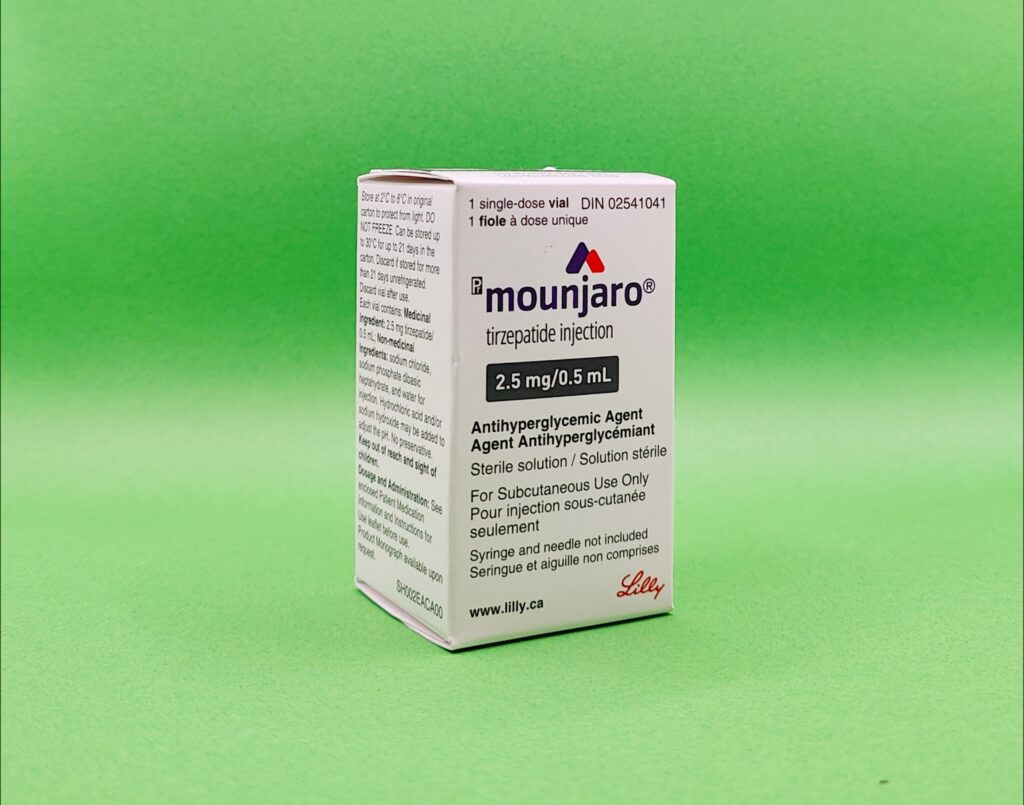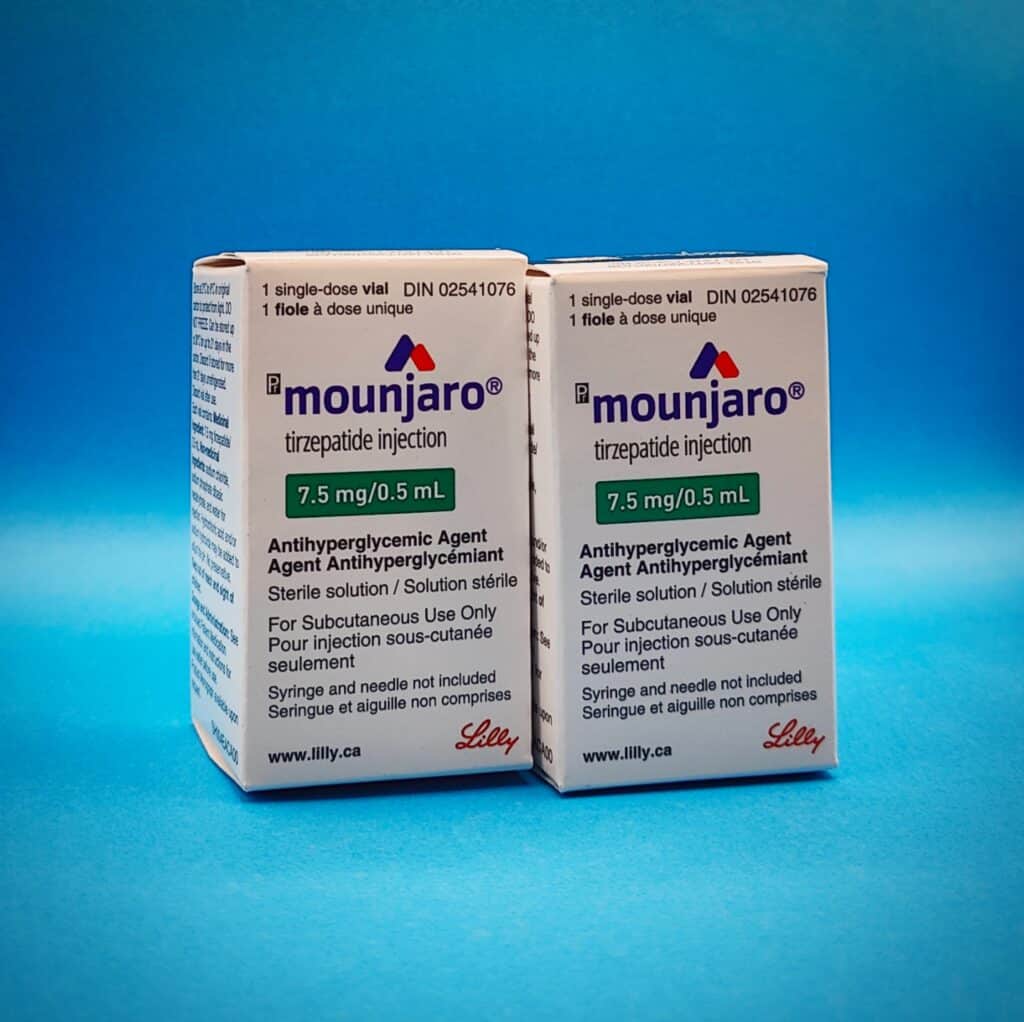How to Manage Mounjaro Side Effects: Tips for Patients
How to Manage Mounjaro Side Effects: Tips for Patients
- Jason K
Mounjaro (tirzepatide) is an effective medication for managing type 2 diabetes and promoting weight loss, but some patients may experience side effects, particularly during the first few weeks of treatment. Managing these side effects is crucial to staying on track with your medication and achieving the best results.
This article will explore common side effects and provide practical tips to manage them, including some lesser-known strategies like using anti-nausea medications.
Common Mounjaro Side Effects
While Mounjaro is effective for controlling blood sugar and aiding weight loss, it may cause the following side effects:
- Nausea
- Diarrhea
- Decreased appetite
- Vomiting
- Abdominal pain
These side effects often occur as your body adjusts to the medication and tend to improve over time.
Who Should Not Take Mounjaro (Tirzepatide)?
Certain individuals should avoid taking Mounjaro due to potential risks:
Medullary Thyroid Carcinoma (MTC):
People with a family history of MTC or multiple endocrine neoplasia syndrome type 2 (MEN 2) should not take Mounjaro, as it may increase the risk of thyroid tumors.Gastrointestinal Issues:
Mounjaro slows down stomach emptying, making it unsuitable for patients with severe conditions like gastroparesis.Lesser-known – Pregnancy:
Mounjaro should be discontinued two months before planning pregnancy, to ensure it’s fully cleared from the body to avoid potential risks to the fetus.History of Pancreatitis:
Patients with pancreatitis should avoid Mounjaro due to the risk of pancreatic inflammation.
Always consult your healthcare provider before starting Mounjao.
Tips for Managing Mounjaro Side Effects
1. Managing Nausea
Nausea is one of the most common side effects when starting Mounjaro. Here are ways to manage it effectively:
- Eat smaller, more frequent meals: Avoid overloading your stomach by eating small portions throughout the day.
- Stay hydrated: Sipping water or clear liquids can help ease nausea.
- Avoid spicy or fatty foods: These foods can irritate your stomach and worsen nausea.
- Timing your injection: Some patients find that taking Mounjaro at night helps them sleep through nausea.
Lesser-known strategy: If these adjustments don’t help, you may want to discuss anti-nausea medications with your doctor. Options like ondansetron (Zofran) or metoclopramide can be prescribed to control nausea when dietary changes aren’t enough
2. Dealing with Diarrhea
Diarrhea can be uncomfortable, but manageable:
- Hydration is key: Drink plenty of water or electrolyte solutions to prevent dehydration.
- Eat bland foods: Stick to the BRAT diet (bananas, rice, applesauce, toast) until symptoms subside.
- Avoid caffeine and alcohol: These can exacerbate diarrhea.
- Cut back on fatty foods: High-fat meals can trigger or worsen diarrhea.
3. Managing Decreased Appetite
A reduced appetite can be beneficial for weight loss, but it’s important to ensure you’re still getting enough nutrients:
- Focus on nutrient-dense foods: Even small portions should be rich in vitamins and proteins.
- Eat when hungry: Don’t force meals, but ensure your intake is balanced throughout the day.
4. Handling Abdominal Pain and Discomfort
Mounjaro can cause some abdominal discomfort in the early stages:
- Avoid overeating: Smaller meals can help prevent bloating and discomfort.
- Exercise lightly: Gentle movements, like walking, can relieve stomach discomfort and aid digestion.
- Use heat therapy: Applying a heating pad to the abdomen may alleviate cramping or pain.
5. When to Seek Medical Advice
While most side effects improve over time, there are times when you should reach out to your healthcare provider:
- If side effects persist or worsen beyond the initial weeks.
- If you experience severe abdominal pain or vomiting.
- If dehydration from diarrhea becomes a concern.
Cost Savings Tip: Buy Mounjaro from Canada
For U.S. patients, the high cost of Mounjaro can be another hurdle in maintaining consistent treatment. Fortunately, buying Mounjaro from Canada offers significant cost savings. Canadian pharmacies provide lower prices due to government-regulated drug pricing.
How Much Can You Save?
- Mounjaro in the U.S.: Up to $1,200 or more per month.
- Mounjaro from Canada: Around $620 per month, a potential savings of 50% or more.
By ordering from an Online Canadian pharmacy, U.S. patients can access the same high-quality medication at a fraction of the cost, helping them stay consistent with their treatment.
Additionally, patients can save even more by ordering multiple months’ worth of Mounjaro in one order, reducing shipping fees.
Additional Tips to Minimize Side Effects
Making a few lifestyle adjustments can further help reduce side effects:
- Maintain a balanced diet: Eating a variety of nutrient-rich foods, including vegetables, lean proteins, and whole grains, can help reduce gastrointestinal side effects.
- Engage in regular physical activity: Light exercise like walking or yoga can improve digestion and overall well-being, helping to manage symptoms like nausea and abdominal discomfort
- Consider natural remedies: Adding ginger or peppermint to your diet may help with nausea. These natural remedies have long been used to settle the stomach.
FAQs About Managing Mounjaro Side Effects
1. Can I take Zofran or other anti-nausea medications with Mounjaro?
Yes, under the guidance of your healthcare provider, you can take medications like Zofran (ondansetron) to manage nausea caused by Mounjaro. Always discuss any new medications with your doctor.
2. How long do Mounjaro side effects last?
Most side effects, such as nausea or diarrhea, occur during the initial weeks of treatment and often subside as your body adjusts to the medication. However, if they persist, consult your healthcare provider.
3. What can I do to reduce nausea from Mounjaro?
Eating smaller meals, avoiding spicy or fatty foods, and staying hydrated can help reduce nausea. You may also talk to your doctor about anti-nausea medications like ondansetron if nausea is severe.
4. Can I switch to a different GLP-1 medication if the side effects of Mounjaro are too severe?
Yes, if side effects become unmanageable, your healthcare provider may recommend switching to another GLP-1 receptor agonist like Ozempic or Wegovy, which may have a different side effect profile.
5. Should I take Mounjaro in the morning or at night to minimize side effects?
Some patients find that taking Mounjaro at night helps them sleep through nausea. It’s best to consult your healthcare provider to determine the right time for your injections based on your symptoms.
For a complete list of Mounjaro side effects and other safety information, visit the FDA’s Mounjaro page.


